Why Is My Cactus Turning White? 11 Reasons
-
Greg Iacono
- Last updated:
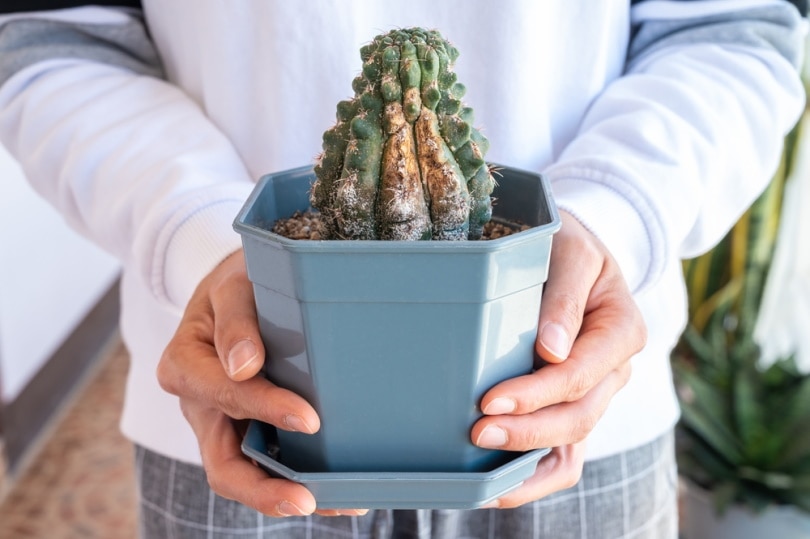
If you own a cactus or several cacti, you may have seen one or more of them turn white. There are several reasons a cactus can turn white, including frost exposure, too much sun, overfeeding, and several other reasons. If you’re watching your cactus plants turn white (and turning white yourself from panic), read on. We have the possible reasons below and some solutions to help you nurture your cactus plants back to health.
The 11 Reasons Most Common Reasons Your Cactus Is Turning White
1. Your Cactus Has Been Watered Too Much
One of the defining traits of cacti is that they don’t need a lot of water. Also, the soil in a cactus plant’s pot should be left to dry out completely between watering. If water your cacti too much, they will start to turn white. Also, the leaves of your cactus can wilt, and the container they are in can become slimy. To help your overwatered cacti, place them in an area with filtered sunlight and let them dry out thoroughly.
2. Your Cactus Got Too Cold
Cactus plants typically live in areas where the temperature is between warm and hot during the day and cool at night. However, if your cacti are exposed to temps below 50 degrees Fahrenheit or lower, ice crystals will often form on them. When this happens, they can turn white. To help them, place your cacti where the temperature is warmer and let them heal. Once they do, trim away any dead parts and keep your cactus plant in a warmer location.
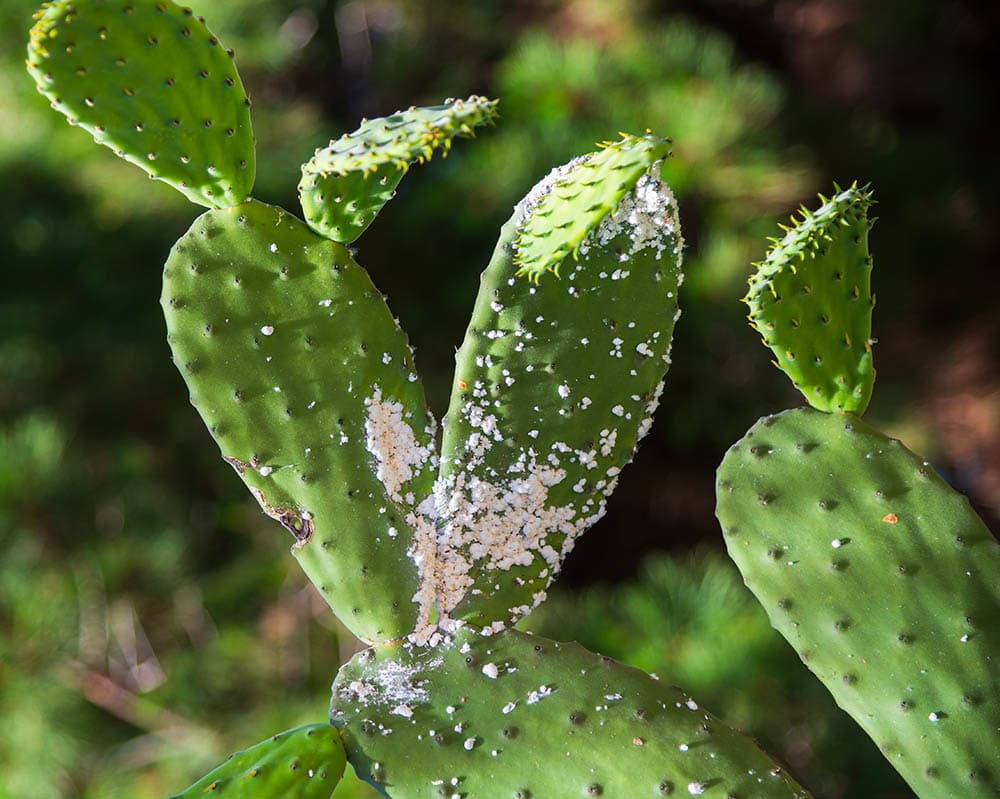
3. Your Cactus Isn’t Getting Enough Air Circulation
Like any other plant, all cacti need sun, water, and oxygen. They also need air circulation (ventilation), or they won’t be able to dry between waterings and can become moldy. The mold can turn the cacti’s surface white due to too much moisture. The solution to this problem is to move your cactus somewhere in your home where there is plenty of air circulation, like an open window or near a door that opens outside.
4. A Cactus Moth Is Affecting Your Cactus
The cactus moth (cactoblastis castoreum) is very unhealthy for cactus plants. When the cactus moth lays its eggs and the eggs hatch, the larvae feed on the tissue under your cactus plant’s skin. This nasty situation can turn your cactus white, lead to deformities in the plant, and kill your cactus if the problem gets severe.
Two methods are available to treat the problem and save your cactus if you’ve determined that a cactus moth is destroying your plant. The first is to use a spray that kills the cactus moth, which you can purchase at your local garden shop. Not only will this kill the cactus moth affecting your cactus, but it also prevents them from laying eggs again. You can also remove all the dead branches and leaves, reducing the amount of cactus the larvae can feed on. The larvae will starve if they don’t have enough to eat, and your cactus will eventually heal.
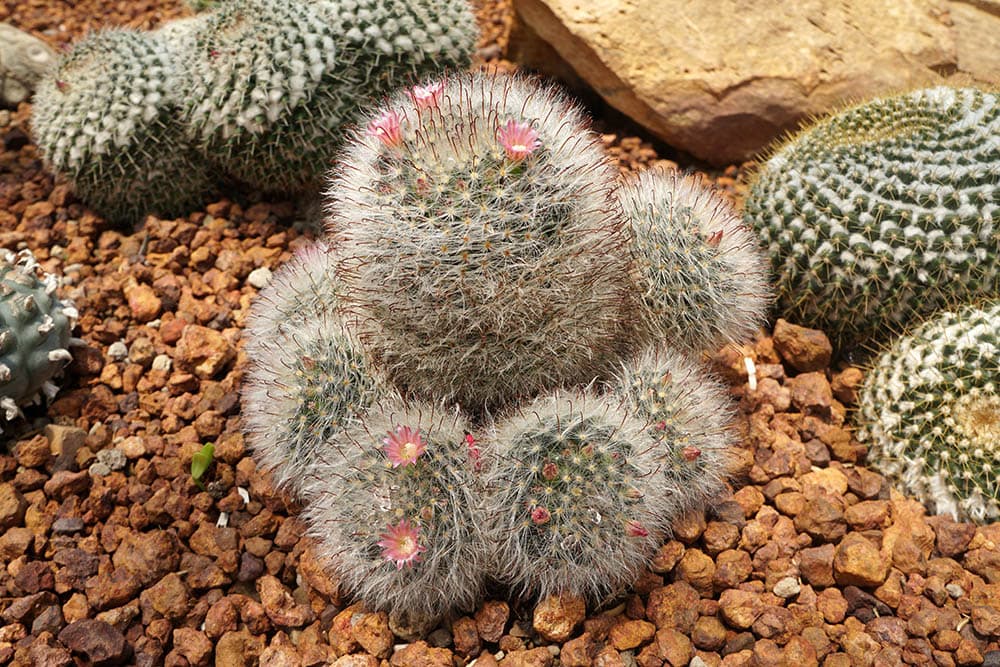
5. Your Cactus Is Affected by Chemicals
Your cactus might be exposed to several chemicals depending on where you live and your water supply. They include bleach, ammonia, and several others, which can cause your cacti to turn white. The exposure might have happened when washing your cactus or watering it, but the results are the same.
There are several solutions you can use to help a cactus that has been exposed to chemicals. The first is to check the container that you use to water them. It’s possible that, depending on the type of plastic, it might be holding onto chemical residues. You can also put your cactus plants outside for a few days and let them detoxify, but make sure to bring them in at night. Lastly, if the problem is severe, you can wash your plants to remove any toxic material that might be left behind.
6. Your Cactus Has a Fungus
Several types of fungi can affect cactus plants and cause them to turn white. Fungi often cause another problem called erythema, which is a rash caused by inflammation the fungus causes. If your cactus has erythema, it will have raised, red spots on its surface, usually surrounded by yellowish or brownish areas. The best method to treat a fungal infection on your cacti is to trim the infected parts and then treat your entire plant with a fungicide. To prevent a fungal infection from happening in the first place, make sure that your cacti are placed in an area of your home that has excellent airflow. Also, don’t overwater your cactus plants, which can cause fungal growth.
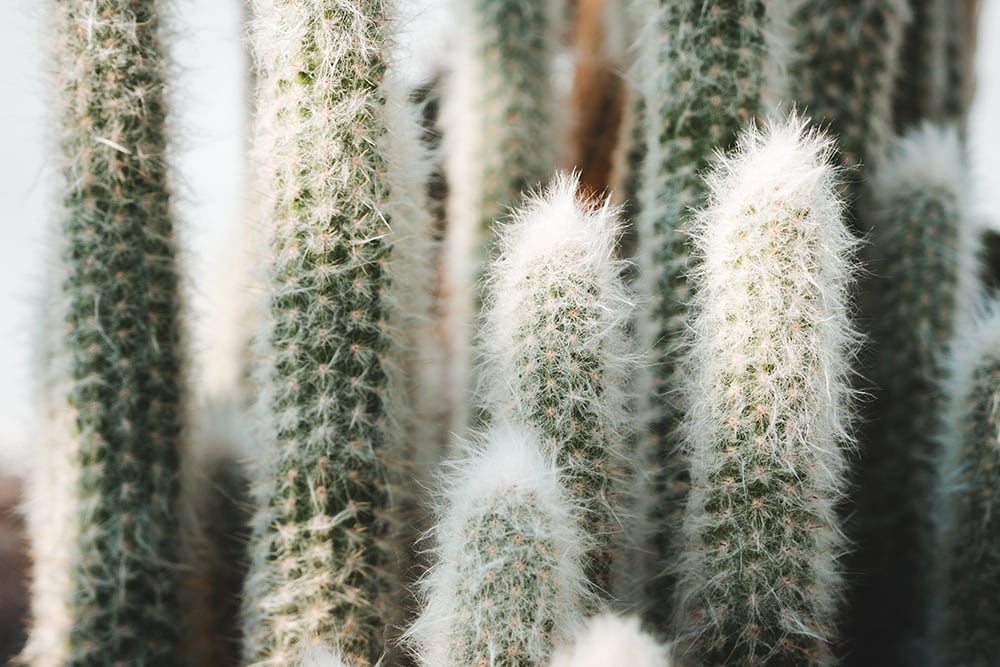
7. Your Cactus Plants Are Getting Too Much Sun
Many people are under the impression that cactus plants can handle full sunshine all day since they grow in the desert. However, since indirect sunlight is best, a cactus can get too much sun and start to look white and a bit “crispy.” When that happens, it means your cactus has been sunburned and dehydrated badly. The solution is to move your plants out of direct sunshine and into a more shaded area. Remember, giving your cactus plants indirect sunlight for most of the day is best. Also, you can spray or mist your cactus once daily to help rehydrate its leaves and nurse it back to health.
8. You’re Giving Your Cactus Too Much Fertilizer
Unlike many plants that need to be fertilized regularly, you should fertilize a cactus about once a year. If you use too much fertilizer, your cactus can turn white, and its leaves can start to turn yellow. This discoloration is because they have too many nutrients and not enough chlorophyll. Without chlorophyll, your cactus can’t photosynthesize UV rays from the sun and might start to look sunburned. The easiest solution is to stop fertilizing your cactus plants as often.

9. Insects May Be Attacking Your Cactus
We talked earlier about cactus moths and how their larvae can destroy your cacti. Several other bugs and insects can also hurt your cacti, including spider mites, mealybugs, aphids, and a few others. Even worse, the nasty bugs place their eggs into the needles of your cactus.
Once the eggs hatch, more bugs are produced, and the problem gets worse. Some insects also secrete honeydew, a substance that can cause mold to grow on your cacti. To kill most of the insects, you should use insecticidal soap. You can also use neem oil, which is a naturally occurring pesticide made from the seeds of the Neem tree.
10. Your Cacti Are Suffering From Corking
One problem that insufficient airflow can cause for cactus plants is that the roots don’t get enough oxygen. This lack of oxygen causes water to build up and can cause corking. You’ll know if your plant has a problem with corking if they start to turn white at their base up to about the halfway point of the plant. Your cacti might also begin to turn a pale gray or brown color. One way to know if corking affects your cactus is to touch the affected area. Corking is likely the problem if it feels wet and softer than the rest of the cactus plant. The best solution is ensuring that your cactus gets plenty of airflow and ventilation.
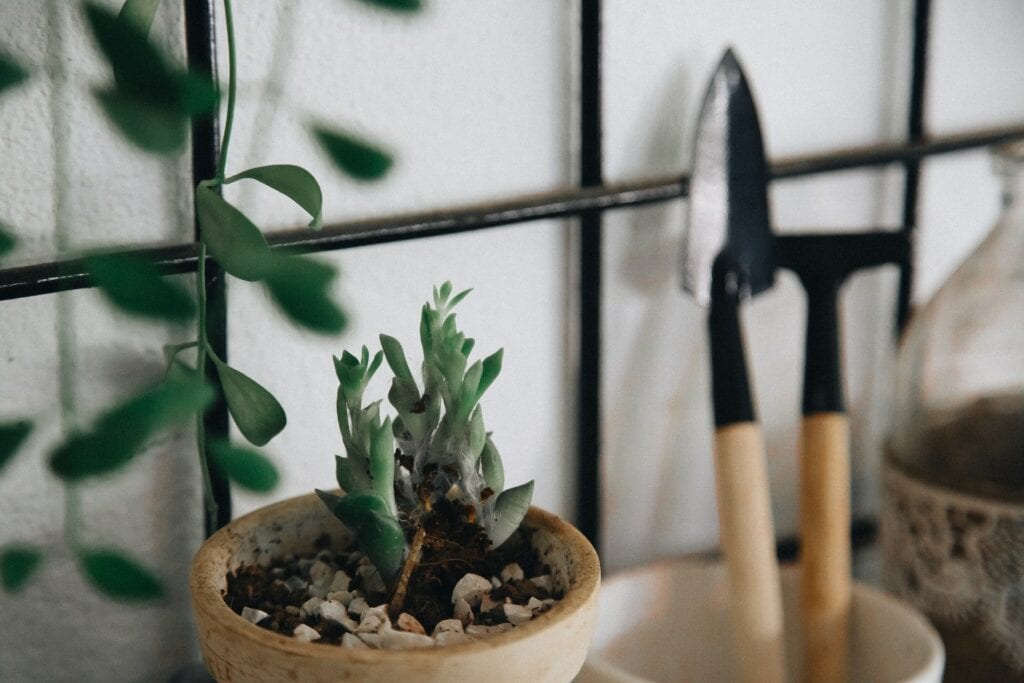
11. Your Cactus Has Root Rot
We discussed earlier how cactus plants need much less water than most other plants. One problem your cactus can have if you overwater it is that its roots can begin to rot. When this happens, salt will build up around the roots and make it much harder for them to absorb water which, in turn, can cause a bacterial infection. To solve the problem, simply water your cactus plants less frequently and, if necessary, repot them with fresh soil.
Final Thoughts
There are several reasons your cactus plant (or several of your cacti) might be turning white. They include overwatering and underwatering, insect infestation, too much fertilizer, and several other problems. The good news is that, if caught early enough, most problems can be cured, and your cactus plants can return to full health.
- See also: 10 Reasons Plant Leaves Turn White
Featured Image Credit: Boyloso, Shutterstock
Contents
